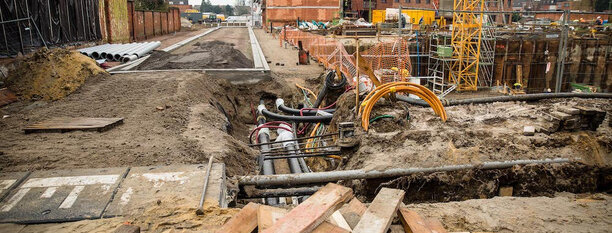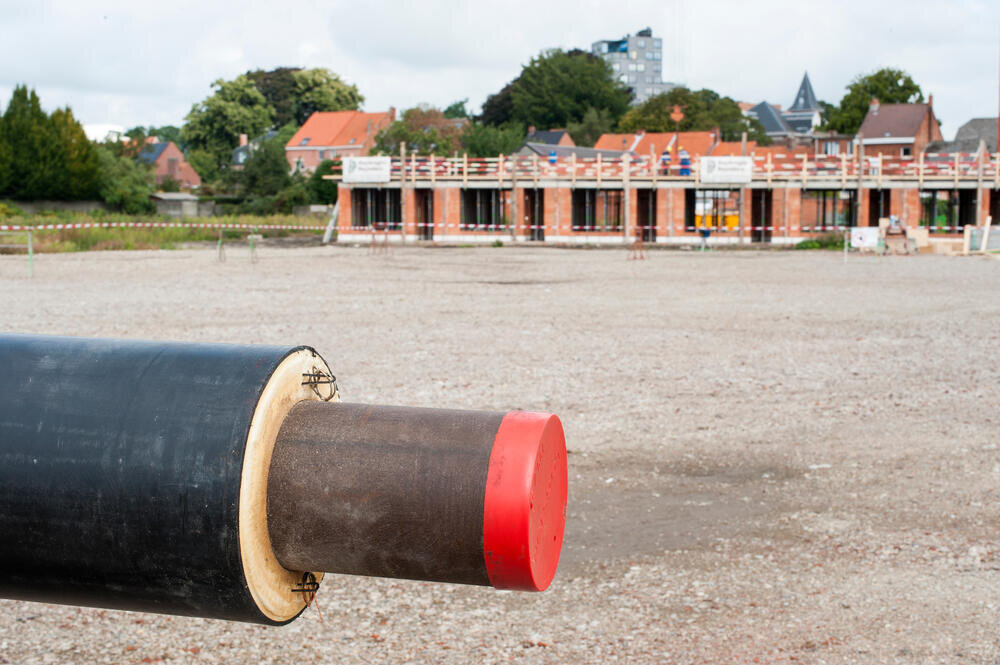
Project Niefhout boasts the first heat grid in the Kempen region
Since last year, the very first heat grid of the Kempen region has been operational, in the Niefhout district, which was developed by ION. The heat grid is a collaboration between the City of Turnhout, the developer Slim Turnhout, Eandis, Veolia and ION. "The heat grids allows us to choose the most environmentally-friendly solution for the district," says Tarsi Tanghe, heat grid project leader at Eandis.

Collective energy supply, the most sustainable solution at any time
All homes in the district are connected to the same heat grid, a network of well-insulated pipelines that distributes the energy from a power station among the homes. In the case of Turnhout, there is a central biomass boiler room that produces hot water, which in turn is distributed to the houses. Through heat exchangers installed in the houses, the heat is used for heating purposes, as drinking water or for bathing and showering. Afterwards, the cooled water is drained away again.
Houses connected to a heat grid do not need their own boiler. Each home has a heat meter that measures exactly how much heat has been consumed at any given moment. The installation takes up very little space: the supply and drainage pipes for the hot water, the heat exchangers and the heat meter, everything is installed in a nice compact manner.
"The main advantage of the heat grid in Niefhout is that there is a centralised heat source in one location that supplies heat to the entire grid," says Tarsi Tanghe of Eandis. "We are currently using a biomass boiler room because it is the best available and most environmentally-friendly solution for this location today. If better alternatives are found in the future, this centralised source can easily be replaced or connected to a larger heat grid without the need for modifications in all the individual homes," he explains.

Geothermal energy, a green future
"We are working on even more ecological solutions for the future," says Tarsi. "The Flemish Institute for Technological Research (VITO), in collaboration with Eandis and the City of Turnhout, is conducting research into deep geothermal energy, or geothermal heat, deep underground. The geothermal system works as follows: via one or more boreholes hot water is pumped from the subsoil, then the heat from the water is transferred to the desired application via a heat exchanger and finally the cooled water is pumped back into the subsoil."
Eandis currently has four heat grids that are operational: in Turnhout, Roeselare, Harelbeke/Kuurne and Leuven. "Soon we will set up another grid in Hoogstraten, and there are several other new projects in the pipeline", Tarsi says. "Among others in Aalst, Mol, Dessel, Kortrijk, Mechelen and various projects in Antwerp. Heat grids will certainly play a key role in tomorrow’s energy distribution, but there are several factors we have to take into account. The possibility of recovering heat, the density of the buildings and other possibilities for the production of green energy nearby, among others. In a healthy mix with other ecological alternatives, heat grids will shape the energy supply of the future," he concludes.





